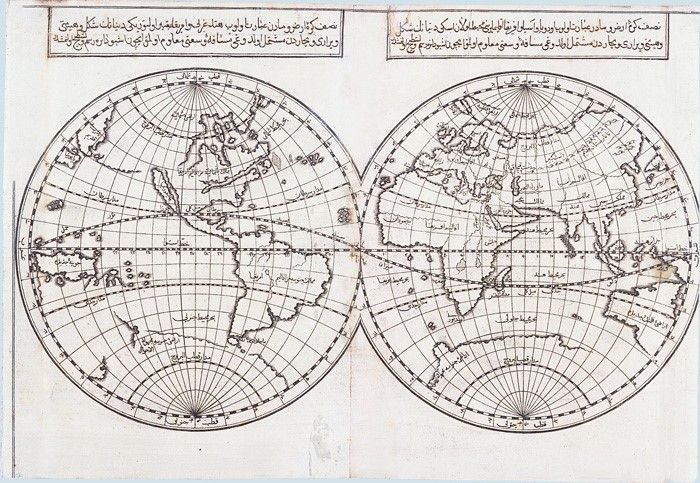Visiting Istanbul could only be incomplete without a relaxing search for books; old, new books, nothing compares with browsing trough open air book shops. And one of the most suitable places is in Beyazit Square, next to the Grand Bazaar. Book lovers and bazar hunters, this is your place, you cand find anything. The book bazar, between Beyazit Mosque and Grand Bazzar is placed on the actual site of an historical landmark, where the Chartoprateia – a Byzantine book and paper market existed. During the Ottoman era, the site became a center for printing and literary trade, drawing many intellectuals in this area. [1]
Not by chance you can find in the middle of the square the statue of Ibrahim Muteferrika, and Ottoman diplomat, originally from Transylvania, Romania, responsable for the 1st printed book in the empire – an Arabic-Turkish dictionary. He was born in 1674 in the city of Cluj, Transylvania, Romania, Hungarian by origins, converted to Islam.  He’s original name remains unknown. He was taken as a prisoner during a riot in 1692 and brought to Constantinople where he was sold as a slave. Later he adopts the name of Ibrahim Muteferrika, this name revealing an offical position at the court. Very little is known about his life before his capture. He studied at a catholic college from Cluj and held significant knowledge of Latin which allowed him to correct and edit books of geography and history. Also he was familiar with tactical warfare and diplomacy. Ibrahim converted to Islam by force, being mistreated by his owner up to that point; nevertheless the conversion proved useful in his professional development. In the meanwhile he becomes more and more preoccupied by the idea of a printer machine, and eventually gets the permission from the sultan. The machine starts to print in the year 1727 in Sultan Selim neighborhood, with the main body brought from Austria. Following a positive review of the activity presented to high-ranking officials and the clergy, Ibrahim is granted the permission to print non-religious texts.
He’s original name remains unknown. He was taken as a prisoner during a riot in 1692 and brought to Constantinople where he was sold as a slave. Later he adopts the name of Ibrahim Muteferrika, this name revealing an offical position at the court. Very little is known about his life before his capture. He studied at a catholic college from Cluj and held significant knowledge of Latin which allowed him to correct and edit books of geography and history. Also he was familiar with tactical warfare and diplomacy. Ibrahim converted to Islam by force, being mistreated by his owner up to that point; nevertheless the conversion proved useful in his professional development. In the meanwhile he becomes more and more preoccupied by the idea of a printer machine, and eventually gets the permission from the sultan. The machine starts to print in the year 1727 in Sultan Selim neighborhood, with the main body brought from Austria. Following a positive review of the activity presented to high-ranking officials and the clergy, Ibrahim is granted the permission to print non-religious texts.
The 1st printing machine in the Ottoman Empire was brought in 1727 by a ferman (official document, order) of Sultan Ahmet III, with the sole condition that the books wouldn’t have a religious character. Even though it was brought in the Empire 3 centuries later than Europe, it was one of the biggest steps in the development of culture and science in Turkey. In 1729 the 1st book is published, and up to 1743, 17 titles in 23 volumes are published. The first one published is Van Kuli, an arab-turkish dictionary in two volumes. A book about the Ottoman Navy was published only four months after the first one. In august 1729 Ibrahim starts editing “Tarih-I Seyyah”- History of travels, written in latin, which describes the conquest of Iran by the Afgans. In 1730 “Kitâb Iklim-I cedid” – The book of new climate is published, written by Emir Mehmed bin Emir Hasan Mesudi, and was dedicated to the Sultan Murad III. Then “Tarih-I Timur” – History of Timur Lenk , written by Ibd Arabșah, and the Chronicle of Ahmed Süheylî related to the conquest of Egypt by the Turks included also a map created by Muteferrika.
After 1742 the printing activity is stopped, and the attempt of a British official to restore the machine failed in 1779. [2]
Today his statue can be seen in the middle of the Book Bazar – Sahaflar Çarsisi, and the entrance to the bazaar is on Çadırcılar Caddesi, just down from the Beyazit Gate, No.7. Buying a book from the place which has a long historical tradition in literature and printing is definitely one of those experiences that are not to be missed.

